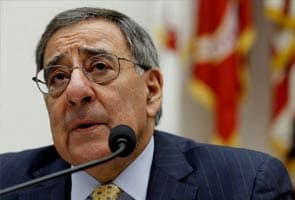
Washington:
President Barack Obama's order to "go in and get Bin Laden" was made public on Thursday, as recorded in a memo scribbled by then-CIA chief Leon Panetta shortly after the decision was made.
Published by Time magazine as the first anniversary of the Al-Qaeda leader's killing in Pakistan approaches, the succinct memo was written by hand and signed by Panetta on April 29, 2011 at 10:35 a.m.
"The direction is to go in and get Bin Laden and if he not there, to get out," wrote Mr Panetta, who is now secretary of defence, in the memorandum.
Mr Panetta said he had received word of the president's decision from Tom Donilon, the national security adviser.
"The decision is to proceed with the assault," he wrote.
"The timing, operational decision making and control are in Admiral McCraven's hands," he added. That was a reference to Admiral William McCraven, who was in charge of the hunt for Bin Laden as commander of the Joint Special Operations Command.
"The approval is provided on the risk profile presented to the president," Mr Panetta continued. "Any additional risks are to be brought to the president for his consideration."
Obama had chosen the riskiest option: a secret helicopter assault by US special forces on a compound in a Pakistani garrison town where Bin Laden was believed to be hiding.
Mr McCraven was notified of the president's directive at 10:45 am and three days later on May 2, 2011, the raid was launched and bin Laden killed, ending a nearly decade-long search to avenge the September 11, 2001 attacks on the United States.
Published by Time magazine as the first anniversary of the Al-Qaeda leader's killing in Pakistan approaches, the succinct memo was written by hand and signed by Panetta on April 29, 2011 at 10:35 a.m.
"The direction is to go in and get Bin Laden and if he not there, to get out," wrote Mr Panetta, who is now secretary of defence, in the memorandum.
Mr Panetta said he had received word of the president's decision from Tom Donilon, the national security adviser.
"The decision is to proceed with the assault," he wrote.
"The timing, operational decision making and control are in Admiral McCraven's hands," he added. That was a reference to Admiral William McCraven, who was in charge of the hunt for Bin Laden as commander of the Joint Special Operations Command.
"The approval is provided on the risk profile presented to the president," Mr Panetta continued. "Any additional risks are to be brought to the president for his consideration."
Obama had chosen the riskiest option: a secret helicopter assault by US special forces on a compound in a Pakistani garrison town where Bin Laden was believed to be hiding.
Mr McCraven was notified of the president's directive at 10:45 am and three days later on May 2, 2011, the raid was launched and bin Laden killed, ending a nearly decade-long search to avenge the September 11, 2001 attacks on the United States.
Track Latest News Live on NDTV.com and get news updates from India and around the world

